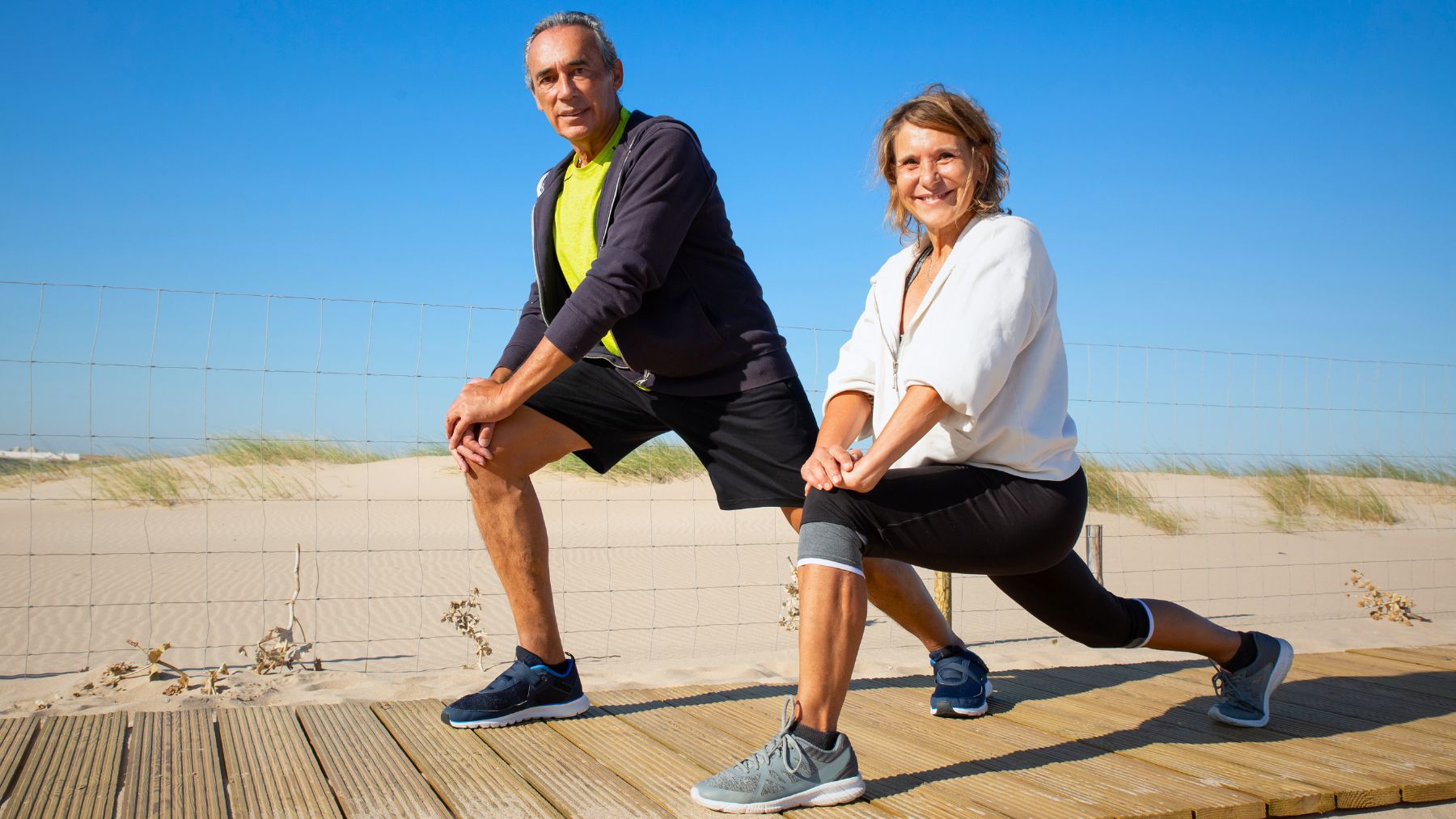When it comes to enhancing lower-body strength after 65, many seniors often gravitate toward popular movements such as glute bridges, backward lunges, or step-ups. However, there is a simpler and effective classic alternative: squats. This exercise engages your quadriceps, hamstrings, glutes, and core while also improving balance and mobility.
Here, we’ll break down why squats stand out compared to other lower-body exercises and the safest ways to integrate them into your routine. We’ll cover guidelines on proper form, modifications for different fitness levels, and techniques for reducing fall risks.
Why squats are a good exercise for leg strength in seniors
Squats serve as a comprehensive exercise that, while primarily targeting the legs, also delivers full-body benefits. For older adults, robust leg muscles enhance balance and coordination, significantly lowering the risk of falls. Besides, controlled squatting applies beneficial stress to the skeletal system, helping to boost bone density and combat osteoporosis.
They require no specialized equipment (though modifications can involve chairs or walls) and adapt to nearly any fitness level. They target the muscles essential for walking, climbing stairs, and sustaining proper posture. In addition, studies indicate that regular squatting can help alleviate joint pain by strengthening the muscles around the knees and hips.
How to do squats safely and effectively
Executing squats with correct technique allows you to get their full benefits while minimizing the risk of injury. Poor form can strain your knees or back, so it’s important to emphasize control and proper alignment. Beginners should start with seated or supported variations before gradually progressing to the full exercise. Below is a step-by-step guide:
- Chair squats (beginner): Place a sturdy chair behind you. Stand with your feet hip-width apart, with your toes pointed forward. Slowly lower yourself toward the chair until you lightly touch it, then stand back up. Use your arms for balance if needed.
- Standing squats (intermediate): Stand facing a countertop and lightly grasp it for support. Lower your hips by pushing them back and down as if you were about to sit in a chair, ensuring your knees remain aligned over your ankles. Descend only to a comfortable depth and then push through your heels to return to standing.
- Depth and posture: Ensure that your knees do not cave inward or extend excessively past your toes. Keep your chest lifted and your core engaged throughout the movement to protect your lower back and maintain correct alignment.
- Breathing: Inhale as you lower your body and exhale as you rise. Maintain a steady breathing rhythm and avoid holding your breath during the movement.
- Repetitions: Aim for 8-12 controlled repetitions on 3-5 sets, performing the routine 2-3 times weekly. Rest for 30-60 seconds between sets to allow for proper recovery.
If balance poses a challenge, practice near a wall or with a supportive companion close by. Begin with shallow squats and gradually increase the depth as your strength and stability improve.
Squats are a safe and scalable exercise for maintaining leg strength well into your later years. By prioritizing proper form and gradual progression, you can build muscle, boost stability, and continue enjoying everyday activities with ease.

